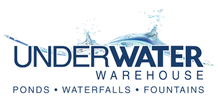-
Advantage Evolution Pumps
-
Alpine Pumps
-
Anjon Landshark External Pumps
-
Aquascape External Pumps
-
Dolphin Pumps
-
GC Tek Pumps
-
Complete Aquatics
-
EasyPro Pumps
-
Helix External Pumps
-
Little Giant Pumps
-
PerformancePro Pumps
-
Periha Variable Amphibious Pumps
-
Pond Force Pumps
-
Pondmaster Pumps
-
Sequence Pumps
-
Your Choice Aquatics
-
Variable Speed Pumps
-
$906.30
-
$1,276.80
-
$1,152.35
-
$1,087.75
-
$984.20
-
$906.30
-
$1,084.90
-
$1,032.65
-
$1,007.00
-
$960.45
-
$941.45
-
$1,614.95 - $1,895.00
-
$1,595.00 - $2,195.00
-
$619.99
-
$122.80
-
$499.99
-
$2,519.99
-
$385.00
-
$799.00 - $949.00
-
$297.09
-
$799.99
-
$1,158.00 - $1,503.00
-
$563.35 - $724.20
-
PerformancePro
SKU: A2-1/2-76-C
PerformancePro 1/2 HP Artesian2 Low RPM Pump 7,560 GPH
PDF: artesian2.pdf$1,151.40 -
$220.95 - $733.92
-
$219.30 - $465.50
-
$121.99 - $312.99
-
$91.99 - $104.99
-
$174.99 - $564.99
-
EasyPro
SKU: EP-MED-SPPUMP
EasyPro Medium Head Self-Priming Pumps
$490.49 - $545.39 -
$582.25 - $603.50
-
$527.39 - $701.99
-
$629.99
-
$549.00
-
$126.80
-
$313.23





















































